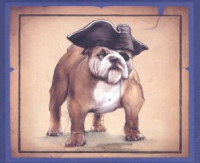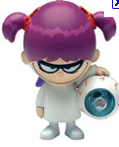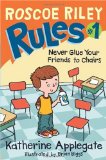 Sometimes a book sneaks up on you.
Sometimes a book sneaks up on you.
“The Homework Machine” by Dan Gutman (ages 8 -12) crept up on me when I was least expecting it. I thought I was reading a jaunty, comic fantasy about every kids’ secret wish to own a machine that does their homework for them. A light farce and nothing more. Because of its short quick interview style, I figured it might be particularly good for 4th/5th grade boys who don’t like to read much. (Which, as it turns out, it is)

Shel Silverstein's Homework Machine
But lo and behold, this small book turns out to have a great big heart and leaves you with lots to chew on.
For a quick summary, let’s jump to the book jacket, shall we! “Meet the D Squad, a foursome of fifth graders at the Grand Canyon School made up of a geek, a class clown, a teacher’s pet, and a slacker. They are bound together by one very big secret: the homework machine. Because the machine, code-named Belch, is doing their homework for them, they start spending a lot of time together, attracting a lot of attention. And attention is exactly what you don’t want when you are keeping a secret.
Before long, things start to get out of control, and Belch becomes much more powerful than they ever imagined. Now the kids are in a race against their own creation, and the loser could end up in jail…or worse!”
Mr. Gutman has a reputation for being a writer that 4th – 6th grade boys, in particular, enjoy. If you’ve got one of those living in your house and are looking for something to get him reading, “The Homework Machine” would be a good place to start.
 Please Write in This Book by Mary Amato (ages 7 – 10) tells the harrowing tale of what happens when a teacher leaves a blank composition book in the Writer’s Corner for her students to find with the instructions “Please Write in this Book.”
Please Write in This Book by Mary Amato (ages 7 – 10) tells the harrowing tale of what happens when a teacher leaves a blank composition book in the Writer’s Corner for her students to find with the instructions “Please Write in this Book.”



 Greg Ruth’s retro illustrations for James Preller’s story adhere in a satisfying way to piratical convention—his buccaneers have flowing beards, eye patches and gnarly expressions—but he adds witty modern-day touches, too, like the vaporous juice box in one man’s hand. Children may quibble with a mildly didactic ending that shows the narrator finding “treasure” at the library, but that hardly sinks an otherwise lively read. —Meghan Cox Gurdon
Greg Ruth’s retro illustrations for James Preller’s story adhere in a satisfying way to piratical convention—his buccaneers have flowing beards, eye patches and gnarly expressions—but he adds witty modern-day touches, too, like the vaporous juice box in one man’s hand. Children may quibble with a mildly didactic ending that shows the narrator finding “treasure” at the library, but that hardly sinks an otherwise lively read. —Meghan Cox Gurdon

























